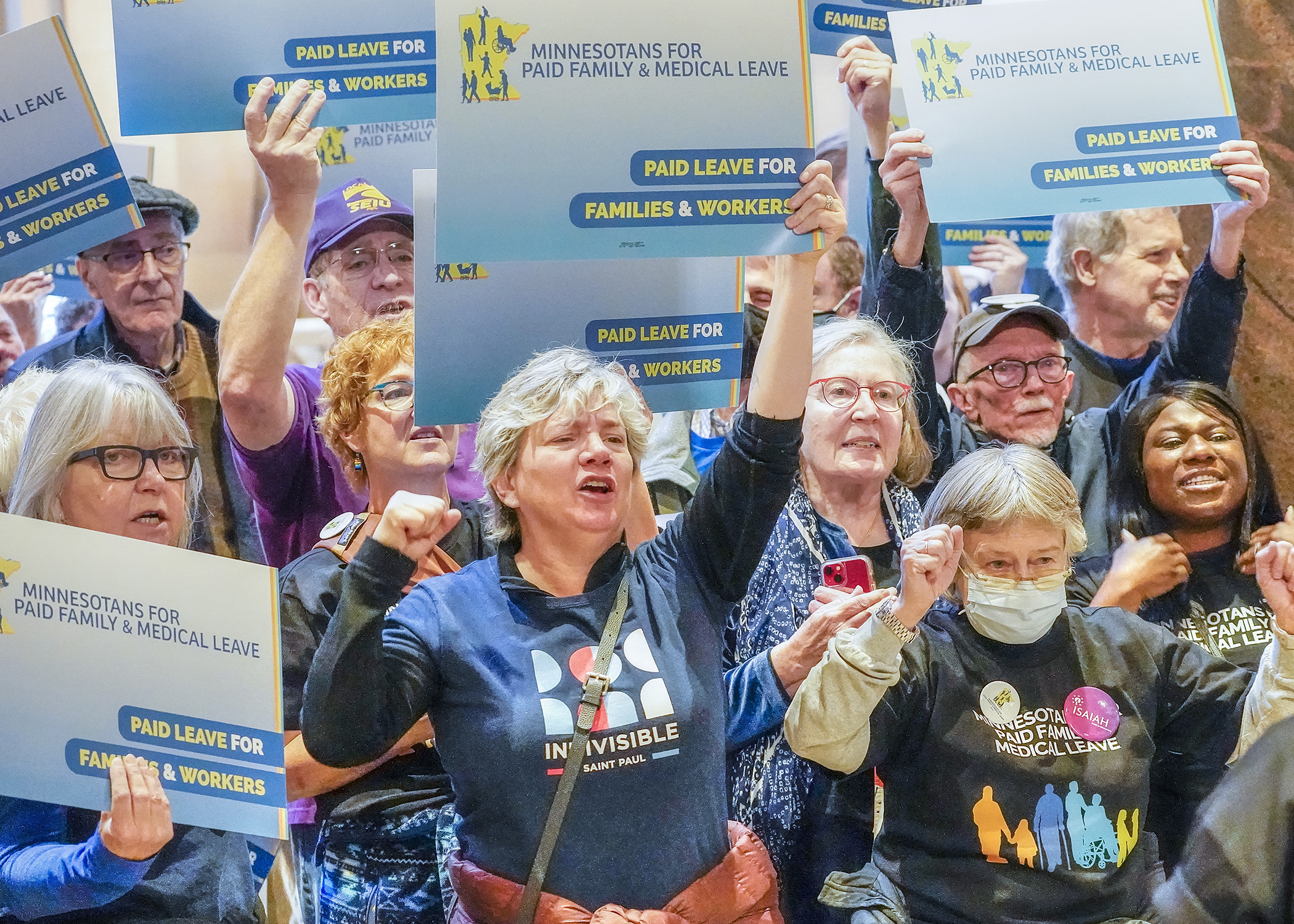Paid Family and Medical Leave conference committee starts work on finding agreement

About a third of the provisions in a bill that’s been years in the making were agreed to in a matter of minutes Friday. However, the 14 sections were identical language.
As for the other 30 that fall into the different, similar, House-only, or Senate-only categories? Time will tell.
There is still plenty of work to do for conferees on HF2*/SF2, the Paid Family and Medical Leave Act. The conference committee is tasked with settling differences with the House bill that passed that body May 2 and the Senate version passed May 8.
Rep. Ruth Richardson (DFL-Mendota Heights), who sponsors the bill with Sen. Alice Mann (DFL-Edina), said work to achieve full agreement remains. Conferees are scheduled to reconvene at 9 a.m. Saturday.
Both bills would provide benefits to an employee unable to work due to a family member’s serious health condition, a qualifying exigency, safety leave, bonding leave, or the employee’s own pregnancy, pregnancy recovery, or serious health condition.
“This is going to be lifechanging for so many Minnesotans,” said Sen. Erin Maye Quade (DFL-Apple Valley).
A self-funding family and medical insurance benefit account modeled after the state’s unemployment insurance fund would be created and managed by a new Family and Medical Benefits Insurance Division within the Department of Employment and Economic Development. A new tax on employers and employees would ultimately fund the account.
Differences remaining
Several important differences remain, which were not addressed at this first meeting. Foremost among them are the maximum amounts of benefits that would be allowed.
House provisions specify a maximum amount of 18 weeks, plus six weeks for pregnancy recovery or complications, for an annual maximum of 24 weeks. The Senate seeks an annual maximum of 20 weeks of benefits.
A Senate-only provision would cap the annual premium increase at 1% of taxable wages paid to each employee.
[MORE: View side-by-side bill comparisons, side-by-side summaries, spreadsheet]
Both versions would require the department to contract with an independent actuarial consultant to, by Oct. 31, 2023, determine the financial soundness of the paid leave insurance program. Only the Senate would require the department to present options to adjust the leave program if the study indicates the premium rate is not actuarily sound.
Both versions would provide $10 million in fiscal years 2026-27 to subsidize certain costs to businesses resulting from the leave program, but they differ on several points.
The House would make employers with 50 or fewer employees eligible for grants up to $3,000 for costs related to hiring short-term workers to fill temporarily vacant positions. The Senate calls for similar grants to businesses when more than 15% of their employees are receiving benefits for temporary workers or increased wages based on a formula.
Insurance carriers could offer paid family and medical leave insurance products, per the House bill, that could be purchased by business to opt out of the state paid leave plan.
Notable differences still to be settled include four Senate-only provisions:
- requiring state verification that only one family member at a time is taking leave for an incapacitated person;
- allowing a person to be fired for misrepresenting facts on a paid leave application;
- excluding seasonal employees working fewer than 150 days in any consecutive 52-week period from being eligible for paid leave; and
- specifying that state employees managing the paid leave program are in the classified civil service.
Related Articles
Search Session Daily
Advanced Search OptionsPriority Dailies
Speaker Emerita Melissa Hortman, husband killed in attack
By HPIS Staff House Speaker Emerita Melissa Hortman (DFL-Brooklyn Park) and her husband, Mark, were fatally shot in their home early Saturday morning.
Gov. Tim Walz announced the news dur...
House Speaker Emerita Melissa Hortman (DFL-Brooklyn Park) and her husband, Mark, were fatally shot in their home early Saturday morning.
Gov. Tim Walz announced the news dur...
Lawmakers deliver budget bills to governor's desk in one-day special session
By Mike Cook About that talk of needing all 21 hours left in a legislative day to complete a special session?
House members were more than up to the challenge Monday. Beginning at 10 a.m...
About that talk of needing all 21 hours left in a legislative day to complete a special session?
House members were more than up to the challenge Monday. Beginning at 10 a.m...